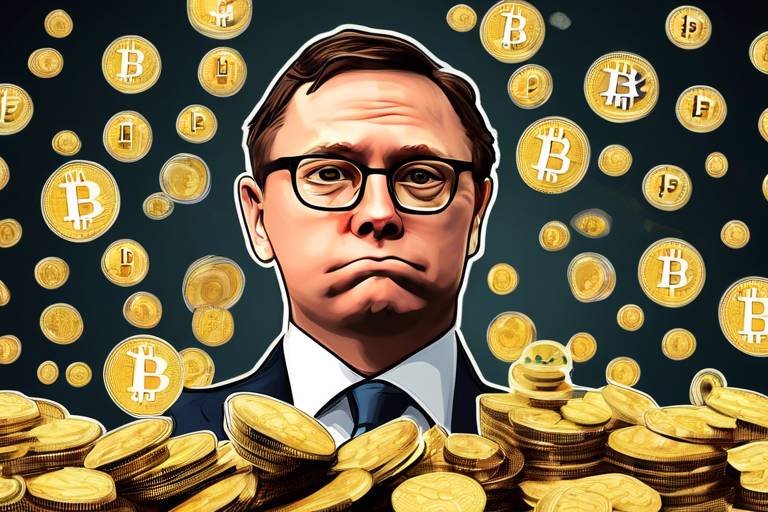Market Predictions - The Future of Stablecoins
The world of finance is undergoing a seismic shift, and at the heart of this transformation lies the realm of stablecoins. These digital assets, designed to maintain a stable value, are not just a passing trend; they represent a fundamental change in how we perceive and interact with money. As we look ahead, it’s essential to consider the various factors that will shape the future of stablecoins, including market trends, regulatory frameworks, technological innovations, and the challenges that lie ahead.
Stablecoins are becoming increasingly popular among investors and users alike, primarily due to their ability to provide the best of both worlds: the stability of traditional currencies and the efficiency of digital assets. As we delve into the anticipated developments in this space, it’s clear that the future is not just bright; it’s full of potential surprises and opportunities. Imagine a world where transactions are instantaneous, fees are negligible, and financial inclusion is a reality for everyone—this is the promise that stablecoins hold.
In the coming years, we can expect to see several key trends emerge within the stablecoin market. For one, the integration of stablecoins with decentralized finance (DeFi) platforms is set to revolutionize the way we conduct financial transactions. This integration will not only enhance liquidity but also provide users with innovative financial products that were previously inaccessible. Furthermore, as more businesses begin to accept stablecoins as a form of payment, we could witness a significant increase in their adoption across various sectors, from e-commerce to remittances.
However, it’s not all smooth sailing. The regulatory landscape surrounding stablecoins is evolving rapidly, and this will undoubtedly impact their future. Different countries are taking diverse approaches to regulation, which could create challenges for global adoption. As stablecoins continue to gain traction, regulators will need to strike a balance between fostering innovation and ensuring consumer protection. This balancing act will be crucial in determining how stablecoins are perceived and utilized in the broader financial ecosystem.
Moreover, technological advancements will play a pivotal role in shaping the future of stablecoins. Innovations in blockchain technology promise to enhance security, efficiency, and user experience in stablecoin transactions. With faster transaction speeds and lower costs, stablecoins could become the preferred choice for everyday transactions. However, as we embrace these technological advancements, we must also remain vigilant about the security risks associated with stablecoin transactions. The potential for fraud and vulnerabilities cannot be overlooked, and robust security measures will be essential to maintaining user trust.
As we navigate this exciting journey into the future of stablecoins, it’s essential to remain aware of the challenges that lie ahead. Market volatility, security concerns, and competition from traditional financial systems are just a few of the obstacles that could hinder growth. Nevertheless, the overall outlook for stablecoins remains optimistic, with significant potential for integration into mainstream finance.
In summary, the future of stablecoins is not just about maintaining stability; it’s about creating a new financial landscape that is inclusive, efficient, and innovative. As we continue to explore the possibilities, one thing is certain: stablecoins are here to stay, and their impact will be felt for years to come.
- What are stablecoins? Stablecoins are digital currencies designed to maintain a stable value, usually pegged to a fiat currency like the US dollar.
- How do stablecoins work? Stablecoins work by using various mechanisms to keep their value stable, such as collateralization or algorithmic adjustments.
- Are stablecoins regulated? The regulatory landscape for stablecoins is evolving, with different countries adopting various approaches to regulation.
- What are the benefits of using stablecoins? Benefits include lower transaction fees, faster transaction speeds, and the ability to access innovative financial products in the DeFi space.
- What challenges do stablecoins face? Challenges include market volatility, security risks, and competition from traditional financial systems.

Current Trends in Stablecoins
As the digital finance landscape continues to evolve, stablecoins are carving out a significant niche, adapting to the shifting economic tides and user expectations. One of the most notable trends is the increasing demand for transparency and accountability. Users are becoming more discerning, seeking stablecoins that not only promise stability but also provide clear insights into their backing assets and operational mechanisms. This growing demand is pushing issuers to adopt more rigorous auditing practices and to publish regular reports on their reserves.
Another trend gaining momentum is the rise of algorithmic stablecoins, which aim to maintain their peg to fiat currencies through complex algorithms rather than by holding reserves. These innovative solutions are drawing interest for their potential to create a more decentralized and flexible stablecoin ecosystem. However, they also come with their own set of risks, as evidenced by past failures in the market.
Furthermore, the integration of stablecoins with decentralized finance (DeFi) platforms is reshaping the way users interact with digital assets. By leveraging stablecoins within DeFi applications, users can access a wide range of financial services, from lending to yield farming, without the typical volatility associated with cryptocurrencies. This synergy is not only enhancing user experience but also driving the adoption of stablecoins across various sectors.
Additionally, the global push towards digital currencies by central banks is influencing the stablecoin market. Many countries are exploring the concept of Central Bank Digital Currencies (CBDCs), which could potentially reshape the competitive landscape for stablecoins. The coexistence of CBDCs and stablecoins may lead to new opportunities for collaboration, as well as challenges in terms of regulation and user adoption.
In terms of market performance, stablecoins are witnessing a surge in trading volumes and liquidity. According to recent data, the total market capitalization of stablecoins has reached unprecedented levels, reflecting their growing acceptance as a viable alternative to traditional fiat currencies. This trend is further fueled by the increasing number of merchants accepting stablecoins for transactions, thereby enhancing their utility in everyday commerce.
In conclusion, the current trends in stablecoins are characterized by a blend of innovation, regulatory scrutiny, and user-centric approaches. As the market continues to mature, it will be fascinating to see how these trends evolve and what new opportunities will arise for both issuers and users alike.

Regulatory Landscape
The regulatory environment surrounding stablecoins is evolving rapidly, creating a dynamic landscape that influences how these digital assets are perceived and utilized. As governments and regulatory bodies worldwide begin to recognize the potential of stablecoins, they are also grappling with the necessity to implement frameworks that ensure consumer protection, financial stability, and market integrity. This balancing act is crucial, as it can either foster growth or stifle innovation in the sector.
Currently, we see a patchwork of regulations emerging globally, with some regions embracing stablecoins while others remain hesitant. The regulatory framework is not just about compliance; it also reflects the broader economic strategies of nations. For instance, countries like the United States and the European Union are working on comprehensive regulations that could serve as a blueprint for others, aiming to provide clarity and security for both issuers and users.
Different countries are adopting varying approaches to stablecoin regulation, creating a diverse regulatory landscape that can be both advantageous and challenging. In the United States, the focus has been on ensuring that stablecoins are backed by sufficient reserves and that issuers are transparent about their operations. Conversely, in regions like Asia, countries such as China have taken a more cautious stance, emphasizing the need for strict oversight and control over digital currencies.
| Region | Regulatory Approach | Key Focus Areas |
|---|---|---|
| United States | Proactive | Transparency, Reserve Requirements |
| European Union | Comprehensive | Consumer Protection, Market Integrity |
| China | Restrictive | Control, Oversight |
| Singapore | Supportive | Innovation, Financial Stability |
This table illustrates the contrasts in regulatory approaches across major markets, highlighting how these differences can affect global adoption and compliance for issuers and users alike. By understanding these regulatory frameworks, stakeholders can better navigate the complexities and seize opportunities within the stablecoin ecosystem.
Regulations can either foster or hinder innovation in the stablecoin space. On one hand, clear guidelines can provide a safety net that encourages investment and development. On the other hand, overly stringent regulations may stifle creativity and limit the potential for new product offerings. Striking the right balance is essential for the healthy growth of the stablecoin market. The challenge lies in creating a regulatory environment that promotes innovation while ensuring that risks are managed effectively.
Navigating compliance requirements poses significant challenges for stablecoin issuers. The complexities of meeting regulatory standards while maintaining operational efficiency can be daunting. Issuers must invest in robust compliance systems, which can be costly and time-consuming. Additionally, the rapidly changing regulatory landscape means that what is compliant today may not be tomorrow. This uncertainty can create hesitance among potential issuers and hinder the growth of the stablecoin market.
In conclusion, as the regulatory landscape continues to evolve, it will play a crucial role in shaping the future of stablecoins. The interplay between regulation and innovation will determine how these digital assets integrate into the broader financial ecosystem, paving the way for their acceptance and adoption.
- What are stablecoins? Stablecoins are digital currencies designed to maintain a stable value by being pegged to a reserve of assets, such as fiat currencies or commodities.
- Why is regulation important for stablecoins? Regulation is essential to ensure consumer protection, prevent fraud, and maintain market integrity, which fosters trust and encourages wider adoption.
- How do different countries regulate stablecoins? Countries vary in their regulatory approaches, with some adopting comprehensive frameworks while others impose strict controls or remain ambiguous.
- What challenges do stablecoin issuers face? Issuers encounter compliance complexities, market volatility, and the need for robust security measures to protect against fraud.
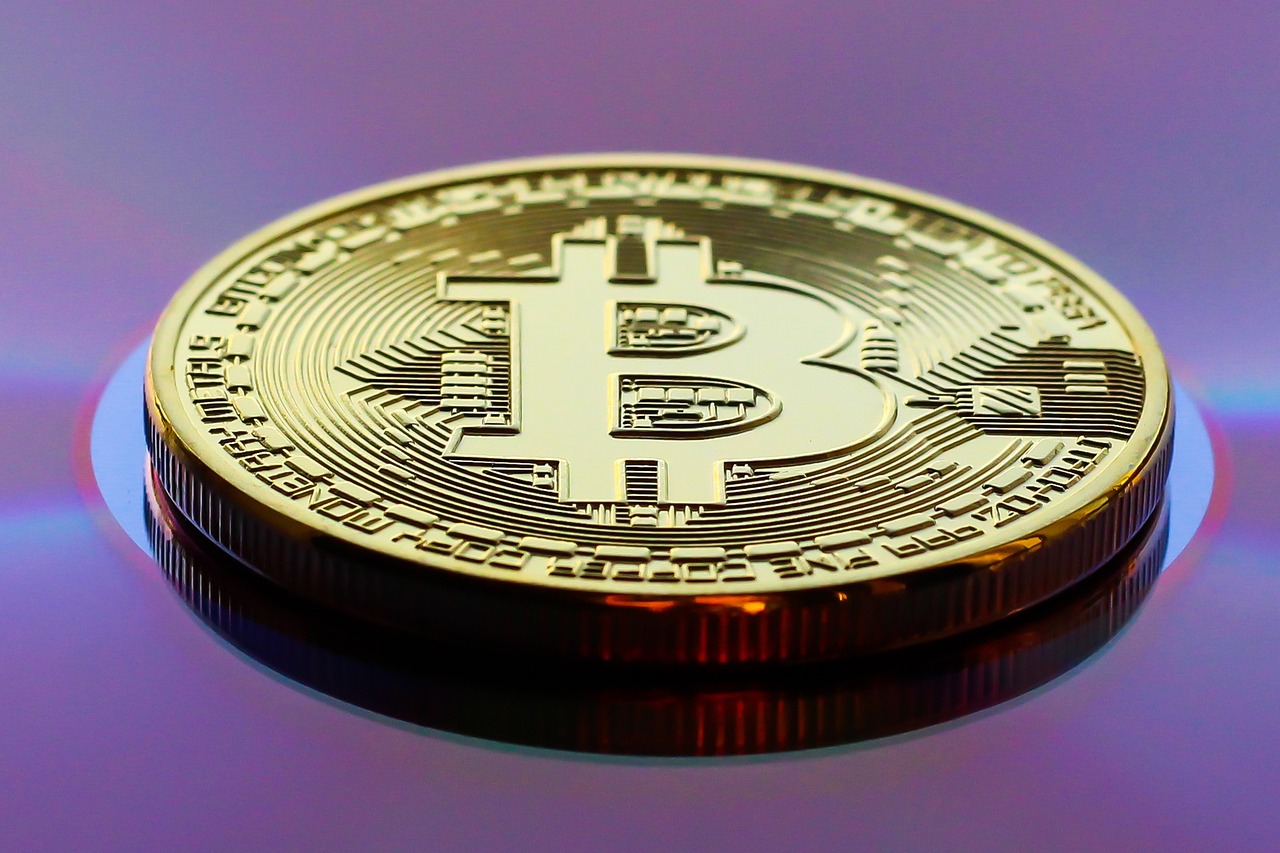
Global Regulatory Approaches
The landscape of stablecoin regulation is as diverse as the countries that are grappling with it. Each nation has its own set of priorities, economic conditions, and cultural attitudes towards digital currencies, leading to a patchwork of regulatory frameworks that can either foster innovation or stifle it. In the United States, for instance, regulators are taking a cautious approach, with agencies like the SEC and CFTC weighing in on how stablecoins should be classified. This has resulted in a somewhat fragmented regulatory environment, where different states may have varying rules, creating confusion for issuers and users alike.
Across the Atlantic, the European Union is working towards a comprehensive regulatory framework, known as the Markets in Crypto-Assets (MiCA) regulation. This initiative aims to provide clarity and enhance consumer protection while promoting innovation. The EU's approach is generally seen as more cohesive compared to the U.S. model, which could give European stablecoin projects a competitive edge in the global market.
Meanwhile, countries like China have taken a more aggressive stance, outright banning private stablecoins while promoting their own digital currency, the Digital Yuan. This state-backed initiative reflects China's broader strategy to maintain control over its financial system and reduce dependency on foreign currencies.
In contrast, nations like El Salvador and the Central African Republic have embraced cryptocurrencies, including stablecoins, as a means to enhance financial inclusion and stimulate economic growth. These countries view stablecoins as a potential solution to their monetary challenges, showcasing a stark difference in regulatory philosophy.
To summarize the global regulatory approaches, here’s a brief comparison:
| Country/Region | Regulatory Approach | Focus Areas |
|---|---|---|
| United States | Cautious and fragmented | Classification, consumer protection |
| European Union | Comprehensive and cohesive | Consumer protection, innovation |
| China | Restrictive | Control over financial system |
| El Salvador & Central African Republic | Proactive | Financial inclusion, economic growth |
This divergence in regulatory approaches highlights the challenges and opportunities that stablecoin issuers face on a global scale. As these regulations evolve, they will undoubtedly shape the future of stablecoins, influencing everything from market adoption to technological innovation.
- What are stablecoins? Stablecoins are cryptocurrencies designed to maintain a stable value by pegging them to a reserve of assets, such as fiat currencies or commodities.
- How do regulations affect stablecoins? Regulations can impact how stablecoins are issued, traded, and used, influencing their adoption and market viability.
- Why are different countries regulating stablecoins differently? Each country has unique economic conditions, regulatory priorities, and cultural attitudes toward cryptocurrencies, leading to varied approaches.
- What is the future of stablecoin regulation? The future is likely to see more cohesive frameworks as governments worldwide recognize the need for clear guidelines to promote innovation while protecting consumers.
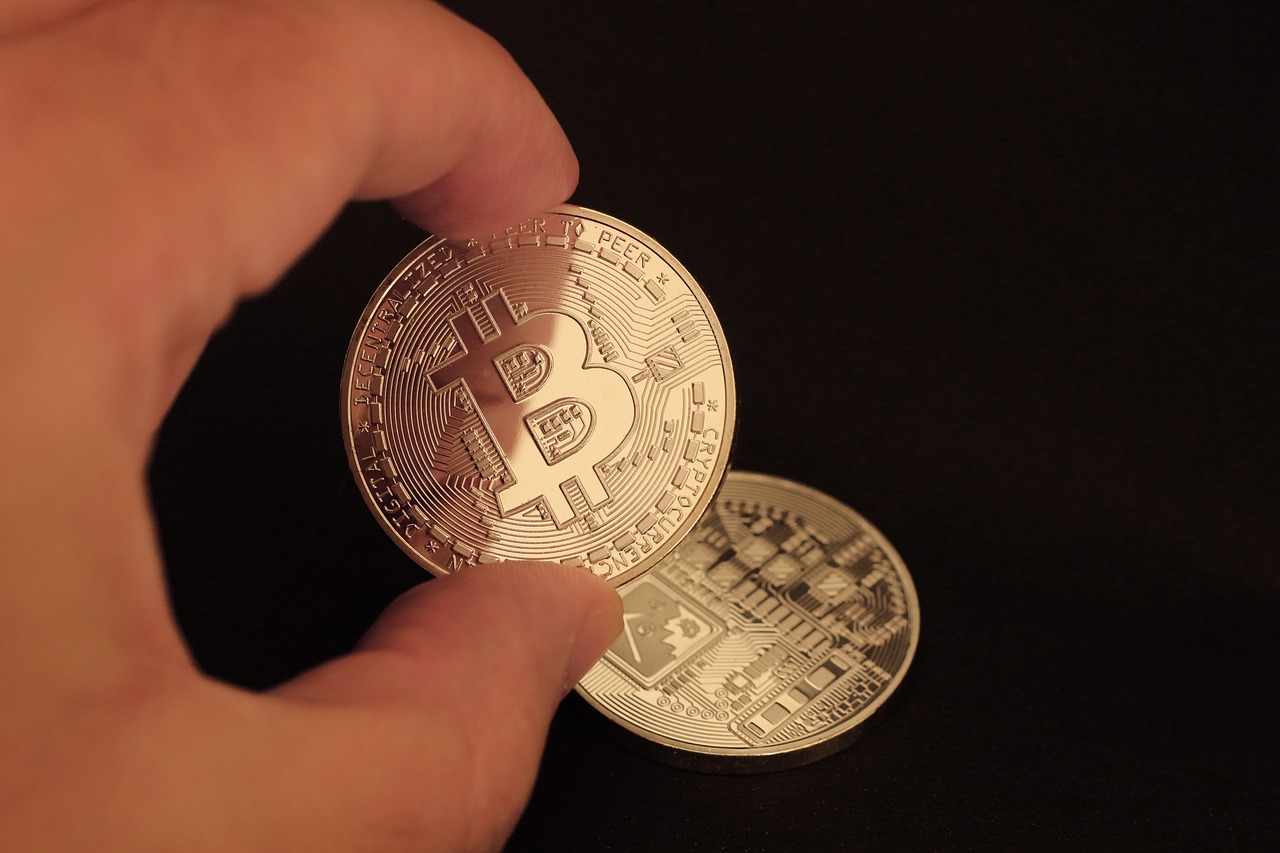
Impact on Innovation
The regulatory landscape surrounding stablecoins is a double-edged sword; while it introduces necessary safeguards, it can also stifle creativity and innovation. Think of regulations as the rules of a game that can either enhance or limit how players engage with one another. On one hand, clear regulations can provide a framework that encourages investment and confidence in stablecoins. On the other hand, overly stringent regulations may deter startups and innovators from venturing into the space, fearing compliance costs and legal repercussions.
One of the most significant impacts of regulation on innovation in the stablecoin sector is the necessity for transparency. Regulators are increasingly demanding that stablecoin issuers provide clear information about their reserves, transaction processes, and risk management strategies. This push for transparency can lead to the development of better auditing technologies and practices, which ultimately enhances user trust. As a result, companies might invest in advanced blockchain technologies to provide real-time proof of reserves, fostering a culture of innovation that prioritizes accountability.
Moreover, regulations can drive innovation in the realm of security. With the rise of cyber threats, stablecoin issuers must invest in cutting-edge security measures to comply with regulatory standards. This necessity can spark the development of new technologies, such as multi-signature wallets, enhanced encryption methods, and blockchain analytics tools designed to detect fraudulent activities. As issuers strive to meet compliance, they inadvertently create a ripple effect that pushes the entire industry toward more secure practices.
However, it’s not all sunshine and rainbows. The balance between regulation and innovation is delicate. If regulations are too restrictive, they can hinder the speed at which new ideas are brought to market. For instance, if a startup has to wait for extensive regulatory approvals before launching a new stablecoin product, it might miss the window of opportunity, allowing more agile competitors to dominate. This can lead to a stagnation of ideas and a lack of diversity in the stablecoin offerings available to consumers.
In conclusion, the impact of regulation on innovation in the stablecoin market is multifaceted. While it can foster a safer and more transparent environment, it also poses challenges that could slow down the pace of innovation. The key for regulators will be to strike a balance that protects consumers without stifling the creative spirit that drives the industry forward. As we move forward, the interplay between regulation and innovation will undoubtedly shape the future of stablecoins in profound ways.
- What are stablecoins? Stablecoins are digital currencies designed to maintain a stable value by pegging them to a reserve of assets, such as fiat currencies or commodities.
- How do regulations affect stablecoins? Regulations can enhance user trust and security but may also limit innovation and the speed at which new products are developed.
- What innovations are emerging in the stablecoin space? Innovations include enhanced security measures, real-time proof of reserves, and integration with decentralized finance (DeFi) platforms.
- Can stablecoins compete with traditional financial systems? Yes, stablecoins offer unique advantages such as lower transaction costs and faster cross-border payments, making them competitive with traditional finance.
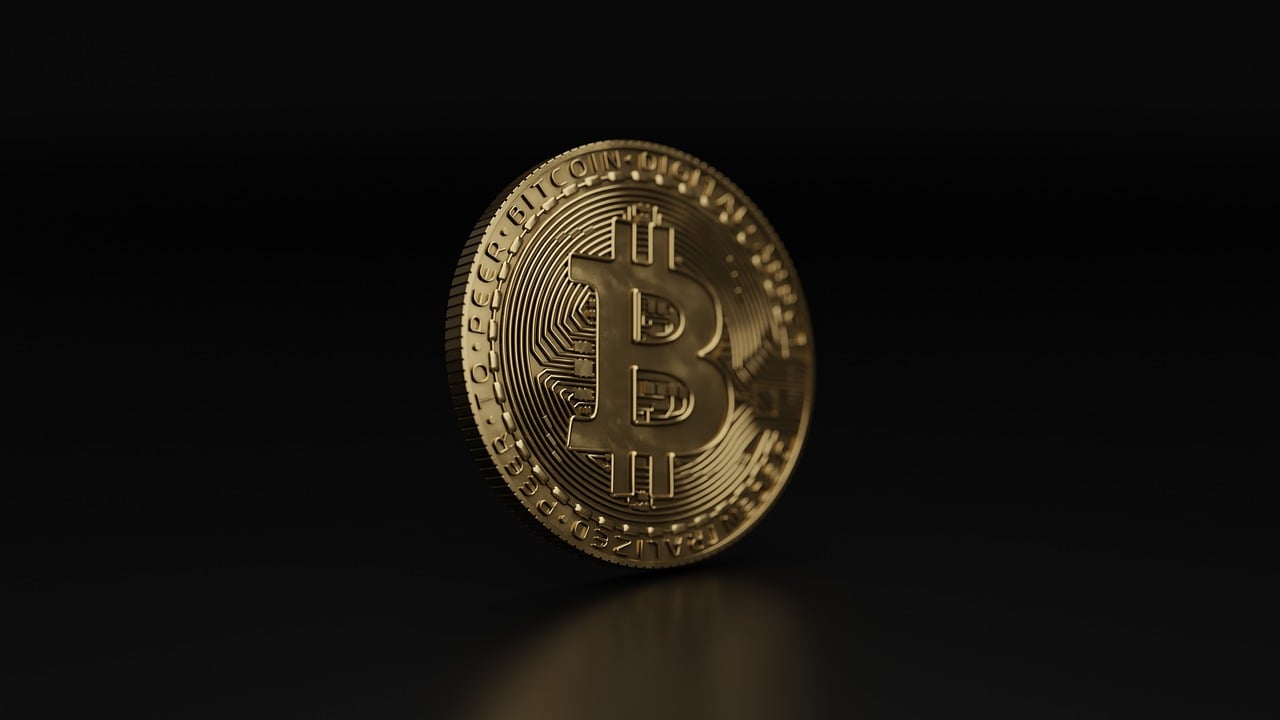
Compliance Challenges
The world of stablecoins is a fascinating one, teeming with potential and promise. However, as with any rapidly evolving financial sector, it comes with its own set of that issuers must navigate. Imagine trying to build a bridge while the ground beneath you is constantly shifting; that's what compliance looks like for stablecoin projects. The landscape is riddled with regulations that vary not just by country but also by region and sometimes even by state. This can create a complex web of rules that issuers must adhere to, making it crucial for them to stay informed and agile.
One of the most significant challenges is the need to comply with anti-money laundering (AML) and know your customer (KYC) regulations. These laws are designed to prevent illicit activities and ensure that financial systems are not exploited for illegal gains. For stablecoin issuers, this means implementing robust verification processes that can sometimes be cumbersome and time-consuming. Failing to comply can lead to severe penalties, including hefty fines and even criminal charges. Therefore, finding a balance between user privacy and regulatory compliance is a tightrope walk that many issuers struggle with.
Another layer of complexity arises from the need to maintain operational efficiency while meeting these compliance standards. Many stablecoin projects are startups or smaller companies that may not have the resources of larger financial institutions. This can lead to a situation where the cost of compliance outweighs the potential benefits, stifling innovation and growth. In fact, a recent survey indicated that over 60% of stablecoin issuers cited compliance costs as a significant barrier to entry in the market.
| Compliance Challenge | Impact on Issuers | Potential Solutions |
|---|---|---|
| AML/KYC Regulations | High operational costs, risk of penalties | Invest in compliance technology, partner with third-party services |
| Varying Regulations | Complexity in compliance processes | Hire compliance experts, stay updated on regulatory changes |
| User Privacy Concerns | Potential loss of user trust | Implement transparent communication strategies |
Moreover, the global nature of stablecoins adds another layer of difficulty. Different countries have different regulatory frameworks, and what is acceptable in one jurisdiction may be frowned upon in another. This inconsistency can lead to confusion and misalignment, making it challenging for issuers to operate smoothly across borders. For instance, while some countries are welcoming to stablecoins, others are implementing stringent regulations that could stifle innovation. This creates a patchwork of regulations that issuers must navigate, which can be both daunting and frustrating.
In conclusion, the compliance challenges facing stablecoin issuers are multifaceted and require a proactive approach. As the market continues to evolve, it is essential for issuers to stay ahead of the curve by investing in compliance technologies, understanding global regulations, and prioritizing user trust. Only then can they hope to thrive in this exciting yet challenging landscape.
- What are the main compliance challenges for stablecoin issuers?
Stablecoin issuers face challenges such as AML/KYC regulations, varying regulations across jurisdictions, and maintaining user privacy. - How can issuers manage compliance costs?
Issuers can invest in compliance technology and partner with third-party services to streamline their processes and reduce costs. - Why is global regulation a challenge for stablecoins?
Different countries have different regulatory frameworks, leading to a complex landscape that can create confusion and compliance difficulties for issuers.
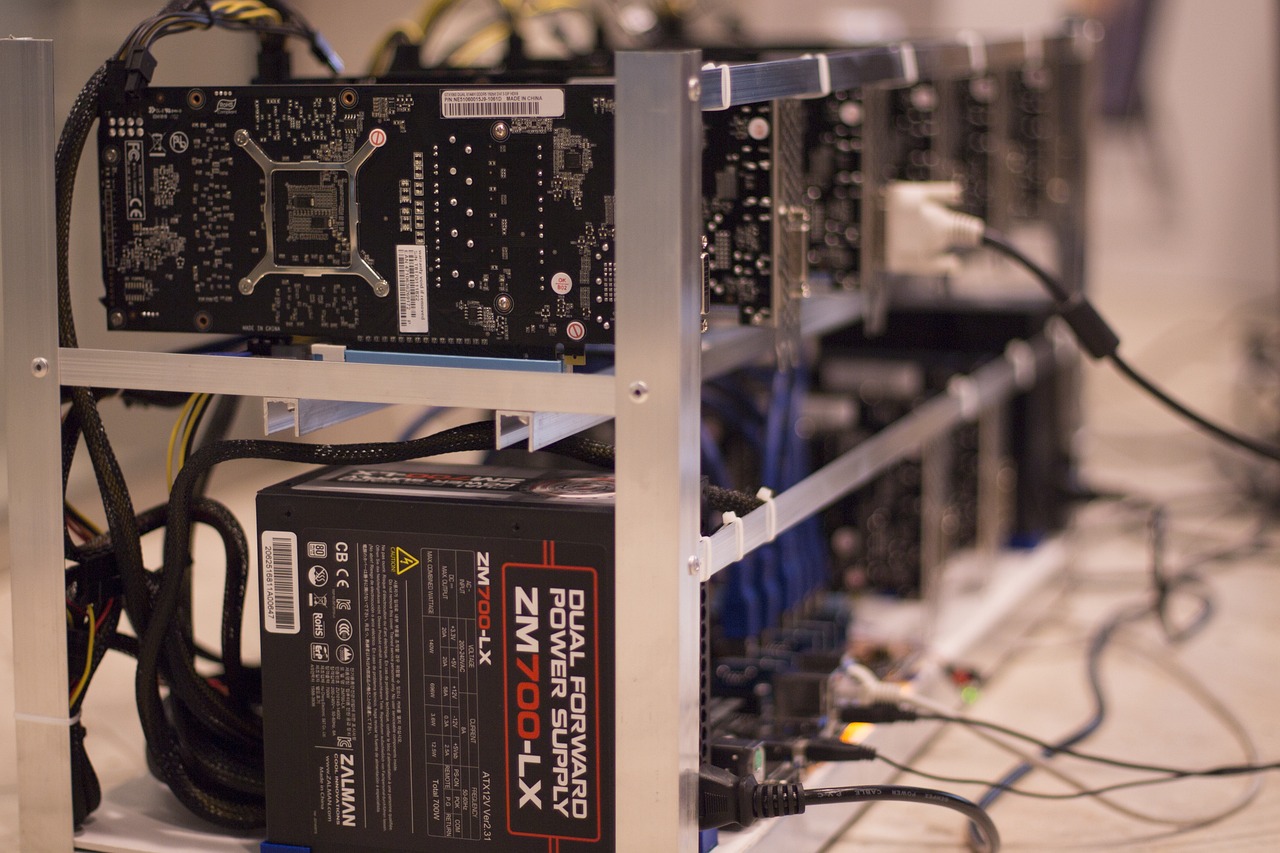
Market Adoption Factors
The adoption of stablecoins is not just a matter of technology; it’s a complex interplay of various factors that drive users to embrace these digital assets. Understanding these factors is crucial for anyone interested in the future of stablecoins. One of the primary drivers is user preferences. As more individuals and businesses seek alternatives to traditional banking, stablecoins offer a viable solution that combines the benefits of cryptocurrency with the stability of fiat currencies. This growing demand is particularly evident among those who operate in regions with unstable currencies, where stablecoins can provide a reliable medium of exchange.
Another significant factor influencing market adoption is the rapid pace of technological advancements. Innovations in blockchain technology not only enhance the security and efficiency of stablecoin transactions but also lower the barriers to entry for new users. For instance, user-friendly wallets and platforms that facilitate easy access to stablecoins are emerging, making it simpler for individuals to engage with these digital assets. Moreover, advancements in security protocols are addressing concerns that potential users may have regarding fraud and theft, thereby fostering greater confidence in stablecoin utilization.
Additionally, the current economic conditions play a pivotal role in shaping the adoption landscape. In times of economic uncertainty, people tend to look for safe havens for their assets. Stablecoins, which are pegged to stable assets like the US dollar, present a compelling option for those looking to protect their wealth from inflation and market volatility. As more individuals and businesses recognize the advantages of using stablecoins for transactions, savings, and remittances, we can expect to see a significant uptick in their adoption across various sectors.
Moreover, the integration of stablecoins with existing financial systems cannot be overlooked. Traditional financial institutions are beginning to explore partnerships with stablecoin issuers, which opens up new avenues for adoption. For instance, banks may offer services that allow customers to hold and transact in stablecoins, further legitimizing their use and encouraging more people to adopt them. This synergy between traditional finance and digital assets is likely to accelerate the mainstream acceptance of stablecoins.
In summary, the factors driving market adoption of stablecoins are multifaceted, encompassing user preferences, technological innovations, economic conditions, and the evolving landscape of traditional finance. As these elements continue to develop, we can anticipate a growing acceptance and utilization of stablecoins in the global economy, creating a more inclusive and efficient financial ecosystem.
- What are stablecoins? Stablecoins are cryptocurrencies designed to maintain a stable value by being pegged to a reserve asset, such as a fiat currency or commodity.
- Why are stablecoins important? They provide a bridge between the volatility of cryptocurrencies and the stability of traditional currencies, making them useful for transactions, savings, and remittances.
- How do stablecoins work? Stablecoins maintain their value through mechanisms like collateralization, where they are backed by reserves, or algorithmic adjustments that control supply.
- What are the risks associated with stablecoins? Risks include regulatory challenges, market volatility, security vulnerabilities, and the potential for fraud.

Technological Innovations
In the rapidly evolving world of finance, are at the forefront of shaping the future of stablecoins. As these digital assets gain traction, the need for enhanced security, efficiency, and user experience becomes paramount. One of the most significant advancements lies in the continuous improvement of blockchain technology. This foundational technology not only supports stablecoins but also revolutionizes their functionality. Imagine a world where transactions are instantaneous, costs are minimized, and security is fortified—this is the promise of blockchain.
As blockchain technology evolves, we see innovations such as layer 2 solutions that optimize transaction speeds and scalability. These developments allow stablecoins to handle a greater volume of transactions without compromising on speed or security. For instance, technologies like the Lightning Network for Bitcoin or Plasma for Ethereum are paving the way for faster and more efficient stablecoin transactions. This means users can send and receive stablecoins with unprecedented speed, making them more appealing for everyday transactions.
Moreover, the integration of stablecoins with Decentralized Finance (DeFi) platforms is creating an entirely new financial ecosystem. DeFi offers innovative financial services without traditional intermediaries, and stablecoins serve as the perfect medium for these transactions. By leveraging smart contracts, users can engage in lending, borrowing, and trading without the need for banks. This synergy not only enhances liquidity in the DeFi space but also encourages more users to adopt stablecoins as their preferred digital asset.
However, as we embrace these technological advancements, we must also be aware of potential challenges. The increased reliance on technology raises concerns about security and fraud. With the rise of sophisticated hacking techniques, ensuring the security of stablecoin transactions is crucial. Developers are actively working on implementing robust security measures, such as multi-signature wallets and advanced encryption techniques, to protect users' assets. The goal is to create a secure environment where users can confidently transact with stablecoins without fearing for their financial safety.
In summary, the future of stablecoins is being shaped by a wave of technological innovations that enhance their functionality and user experience. As blockchain technology continues to evolve and integrate with DeFi platforms, we can expect stablecoins to become an integral part of the financial landscape. The journey ahead is exciting, and as technology continues to advance, so too will the possibilities for stablecoins in the global economy.
- What are stablecoins? Stablecoins are digital currencies designed to maintain a stable value by pegging them to a reserve asset, such as a fiat currency or commodity.
- How do technological innovations impact stablecoins? Innovations in blockchain technology and integration with DeFi platforms enhance the speed, security, and usability of stablecoins, making them more appealing to users.
- What security measures are in place for stablecoins? Developers implement various security measures, including multi-signature wallets and encryption techniques, to protect users from fraud and hacking.
- Will stablecoins replace traditional currencies? While stablecoins offer many advantages, they are more likely to complement traditional currencies rather than completely replace them in the near future.

Blockchain Developments
As we dive into the world of stablecoins, one cannot overlook the profound impact of blockchain technology on their functionality and growth. Blockchain serves as the backbone of stablecoins, providing the necessary infrastructure for secure, transparent, and efficient transactions. With the rapid evolution of this technology, we are witnessing remarkable advancements that are reshaping the stablecoin landscape.
One of the most exciting developments in blockchain is the introduction of layer-two solutions. These innovations aim to enhance transaction speeds and reduce costs, addressing some of the significant limitations of traditional blockchain networks. For instance, by processing transactions off the main blockchain, layer-two solutions can handle a higher volume of transactions, making stablecoins more viable for everyday use. Imagine being able to send money across the globe in seconds, with minimal fees—this is the future that layer-two solutions promise.
Moreover, the integration of smart contracts into stablecoin frameworks is another game-changer. Smart contracts automate and enforce agreements without the need for intermediaries, thus reducing the potential for fraud and errors. This technology not only streamlines operations but also enhances user trust. For example, a smart contract can automatically execute a payment in stablecoins once certain conditions are met, eliminating the need for manual intervention. This level of automation can significantly improve the user experience, making transactions faster and more reliable.
Furthermore, innovations in interoperability are crucial for the future of stablecoins. As various blockchain networks emerge, the ability for stablecoins to operate across these platforms will be essential. Projects focused on interoperability are working to ensure that stablecoins can seamlessly interact with different blockchains, allowing users to move their assets freely and efficiently. This flexibility can lead to greater adoption and usage of stablecoins across diverse financial ecosystems.
To illustrate these advancements, consider the following table that highlights some key blockchain developments impacting stablecoins:
| Development | Description | Impact on Stablecoins |
|---|---|---|
| Layer-Two Solutions | Enhances transaction speed and reduces costs. | Facilitates everyday transactions with minimal fees. |
| Smart Contracts | Automates agreements, reducing fraud and errors. | Improves transaction reliability and user trust. |
| Interoperability | Enables stablecoins to function across multiple blockchains. | Increases flexibility and adoption in various ecosystems. |
In conclusion, the ongoing developments in blockchain technology are pivotal in shaping the future of stablecoins. As these innovations continue to evolve, they will not only enhance the functionality and security of stablecoins but also drive their adoption in mainstream finance. The landscape is changing rapidly, and those who stay ahead of these trends will be well-positioned in the digital asset space.
- What are stablecoins? Stablecoins are digital assets designed to maintain a stable value by pegging them to a reserve of assets, such as fiat currencies or commodities.
- How does blockchain technology benefit stablecoins? Blockchain technology provides secure, transparent, and efficient transaction processing, which is crucial for the functionality of stablecoins.
- What are layer-two solutions? Layer-two solutions are technologies that operate on top of a blockchain to improve transaction speed and reduce costs.
- What role do smart contracts play in stablecoins? Smart contracts automate transactions and agreements, enhancing reliability and reducing the potential for fraud.
- Why is interoperability important for stablecoins? Interoperability allows stablecoins to function across different blockchain networks, increasing their usability and adoption.

Integration with DeFi
The integration of stablecoins with Decentralized Finance (DeFi) platforms is nothing short of revolutionary. Imagine a world where your digital assets can work for you, providing liquidity, earning interest, and facilitating transactions—all without the need for traditional banks. This is the promise that stablecoins bring to the DeFi space, creating a seamless bridge between the stability of fiat currencies and the innovative potential of blockchain technology.
Stablecoins serve as the backbone of many DeFi applications, allowing users to engage in various financial activities with minimal volatility. For instance, when you lend your stablecoins on a DeFi platform, you’re not just earning interest; you’re participating in a decentralized ecosystem that operates on smart contracts. These contracts automatically execute transactions based on predetermined conditions, ensuring transparency and efficiency.
Moreover, stablecoins enhance liquidity in DeFi markets. They provide a stable medium of exchange that users can rely on, making it easier to swap between different cryptocurrencies without the fear of sudden price swings. This stability is crucial for users looking to enter or exit positions in volatile markets. In fact, many DeFi protocols have started to prioritize stablecoin pairs to facilitate smoother trading experiences.
Additionally, the synergy between stablecoins and DeFi opens up new avenues for innovation. Developers are constantly exploring ways to leverage stablecoins for various applications, such as:
- Yield Farming: Users can stake their stablecoins in liquidity pools to earn rewards.
- Decentralized Lending: Borrowers can take out loans with stablecoins, often at lower interest rates than traditional banks.
- Insurance Products: Stablecoins can be used to back decentralized insurance contracts, providing coverage against smart contract failures.
However, this integration is not without its challenges. The rapid growth of DeFi has led to increased scrutiny from regulators, who are concerned about the potential for fraud and market manipulation. As stablecoins become more intertwined with DeFi, they may face stricter regulations that could impact their usability and adoption. Nevertheless, the potential for growth in this sector remains immense, with many experts predicting that stablecoins will become a cornerstone of the DeFi landscape.
In conclusion, the integration of stablecoins with DeFi platforms is a game-changer in the financial world. It not only democratizes access to financial services but also empowers users to take control of their assets in ways previously thought impossible. As we move forward, the relationship between stablecoins and DeFi will likely continue to evolve, paving the way for innovative solutions that redefine how we think about money and finance.
1. What are stablecoins?
Stablecoins are cryptocurrencies designed to maintain a stable value by pegging them to a reserve of assets, typically fiat currencies like the US dollar. This stability makes them ideal for transactions and savings in the volatile crypto market.
2. How do stablecoins work within DeFi?
Stablecoins are used in DeFi to provide liquidity, facilitate lending and borrowing, and enable trading without the volatility associated with other cryptocurrencies. They act as a stable medium of exchange in various decentralized applications.
3. What are the benefits of using stablecoins in DeFi?
The benefits include reduced volatility, increased liquidity, the ability to earn interest through lending, and access to innovative financial products without intermediaries.
4. Are there risks associated with stablecoins in DeFi?
Yes, risks include regulatory scrutiny, potential smart contract vulnerabilities, and the overall security of the stablecoins themselves. Users should conduct thorough research and consider these factors before participating.
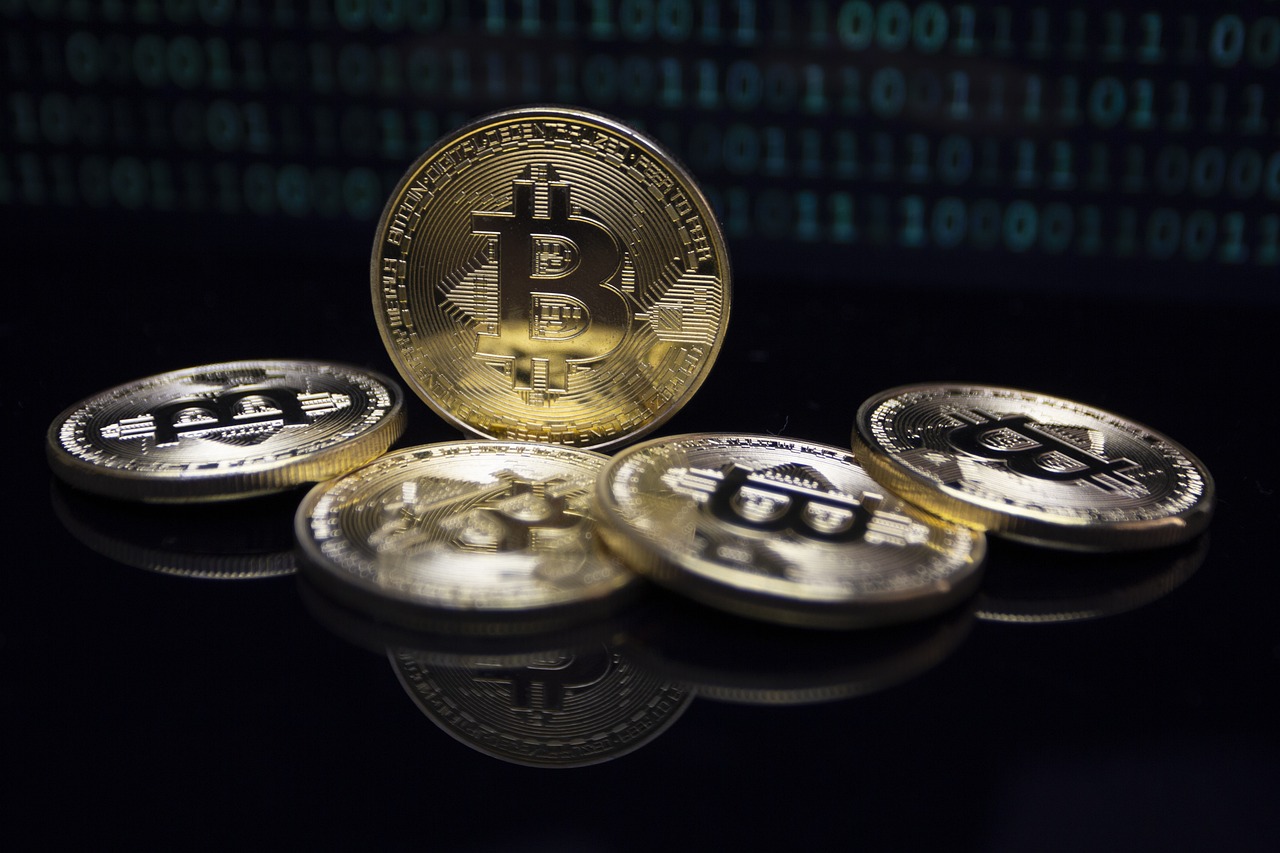
Challenges Facing Stablecoins
The rise of stablecoins has undoubtedly revolutionized the digital asset landscape, but like any burgeoning technology, they come with their own set of challenges. One of the most pressing issues is market volatility risks. Even though stablecoins are designed to maintain a stable value, external factors such as economic shifts, regulatory changes, and market sentiment can still lead to fluctuations. For instance, a sudden drop in the value of the underlying asset can create panic among users, prompting them to withdraw their investments. This creates a paradox where the very stability that attracts users can be compromised by external market forces.
Moreover, security and fraud concerns are paramount in the stablecoin ecosystem. As these digital assets become more popular, they also attract the attention of malicious actors. Common vulnerabilities include hacking incidents and phishing scams, which can lead to significant financial losses for users. The need for robust security measures cannot be overstated; it's essential for stablecoin issuers to invest in advanced security protocols to protect their users' funds. According to a recent report, over 60% of crypto-related thefts in 2022 involved stablecoins, highlighting the urgent need for enhanced security.
Another challenge is the competition from traditional financial systems. While stablecoins offer innovative solutions, they still face skepticism from regulators and traditional banks. Many financial institutions are hesitant to embrace these digital assets, fearing they could disrupt existing monetary systems. This skepticism can lead to regulatory hurdles that may stifle innovation and slow down the adoption of stablecoins. To illustrate this point, consider the following table that compares the advantages and challenges of stablecoins against traditional banking systems:
| Aspect | Stablecoins | Traditional Banking |
|---|---|---|
| Transaction Speed | Instantaneous | Varies (1-3 days) |
| Fees | Lower | Higher |
| Regulatory Oversight | Emerging | Established |
| Accessibility | Global | Restricted |
In addition to these challenges, stablecoin issuers must navigate a complex regulatory landscape. Compliance with existing regulations can be cumbersome, and the constant evolution of laws can create uncertainty. This can deter potential investors and users, as they may be unsure about the legal implications of using stablecoins. Furthermore, the lack of a unified regulatory framework across different jurisdictions complicates matters even further, leading to potential legal repercussions for issuers who may inadvertently violate local laws.
Lastly, the lack of public understanding and awareness about stablecoins can also hinder their growth. Many potential users remain unaware of how stablecoins function and the benefits they offer. Educating the public about these digital assets is crucial for fostering wider adoption. As the saying goes, "knowledge is power," and in the case of stablecoins, empowering users with information could lead to greater trust and acceptance in the mainstream financial ecosystem.
- What are stablecoins? Stablecoins are digital currencies designed to maintain a stable value by pegging them to a reserve of assets, such as fiat currencies or commodities.
- How do stablecoins differ from regular cryptocurrencies? Unlike regular cryptocurrencies, which can be highly volatile, stablecoins aim to provide price stability, making them more suitable for everyday transactions.
- What are the main challenges facing stablecoins? Major challenges include market volatility risks, security and fraud concerns, regulatory hurdles, and competition from traditional financial systems.
- How can users protect themselves when using stablecoins? Users should employ robust security practices, such as using secure wallets, enabling two-factor authentication, and staying informed about potential scams.

Market Volatility Risks
When we talk about stablecoins, the very essence of their existence is to provide a safe harbor in the turbulent seas of cryptocurrency volatility. However, it’s crucial to recognize that stablecoins are not completely immune to the unpredictable waves of the market. Even though they are designed to maintain a stable value, external factors can introduce significant risks that can impact their stability and, consequently, the trust of their users.
One of the primary concerns is the inherent market volatility that can affect even the most stable of assets. For instance, if the underlying asset that a stablecoin is pegged to experiences sudden fluctuations, it could lead to instability in the stablecoin itself. Take, for example, a stablecoin pegged to the US dollar. If there’s a sudden economic crisis or a significant change in monetary policy, it could affect the dollar's value and, in turn, the stablecoin's value. It's like trying to balance a tightrope while a strong wind blows; one misstep can send everything tumbling down.
Additionally, the liquidity of stablecoins can also pose a risk. If a large number of users decide to redeem their stablecoins for fiat currency simultaneously, it could lead to a liquidity crunch, where the issuer may struggle to meet those redemptions. This situation can create a domino effect, causing panic among users and potentially leading to a loss of confidence in the stablecoin. Imagine a bank run, but in the digital realm; it can escalate quickly and result in severe consequences.
Moreover, market sentiment plays a significant role in the perception of stablecoins. If traders perceive a stablecoin as being at risk, they may rush to sell it, driving down its price and creating a self-fulfilling prophecy of instability. This psychological aspect of trading can be likened to a game of musical chairs; when the music stops, and everyone scrambles for safety, those left without a chair face dire consequences.
To illustrate these risks further, consider the following table that highlights some key factors contributing to market volatility risks for stablecoins:
| Risk Factor | Description |
|---|---|
| Market Sentiment | Traders' perceptions can lead to rapid sell-offs, impacting stability. |
| Liquidity Crunch | Mass redemptions can overwhelm issuers, leading to instability. |
| Underlying Asset Fluctuations | Changes in value of pegged assets can directly affect stablecoin value. |
| Regulatory Changes | New regulations can impact the operations and trust in stablecoins. |
In summary, while stablecoins offer a level of stability compared to other cryptocurrencies, they are not without their risks. The market volatility risks they face are multifaceted, stemming from external economic factors, user behavior, and regulatory environments. As the stablecoin market continues to evolve, it’s crucial for users to remain vigilant and informed about these risks, ensuring that they make educated decisions in their digital asset journeys.
- What are stablecoins? Stablecoins are cryptocurrencies designed to maintain a stable value by pegging them to a reserve of assets, typically fiat currencies.
- Why do stablecoins face market volatility risks? Despite their design for stability, external economic factors, market sentiment, and liquidity issues can introduce volatility.
- How can users mitigate risks associated with stablecoins? Users can stay informed about market trends, diversify their holdings, and understand the underlying assets of their stablecoins.
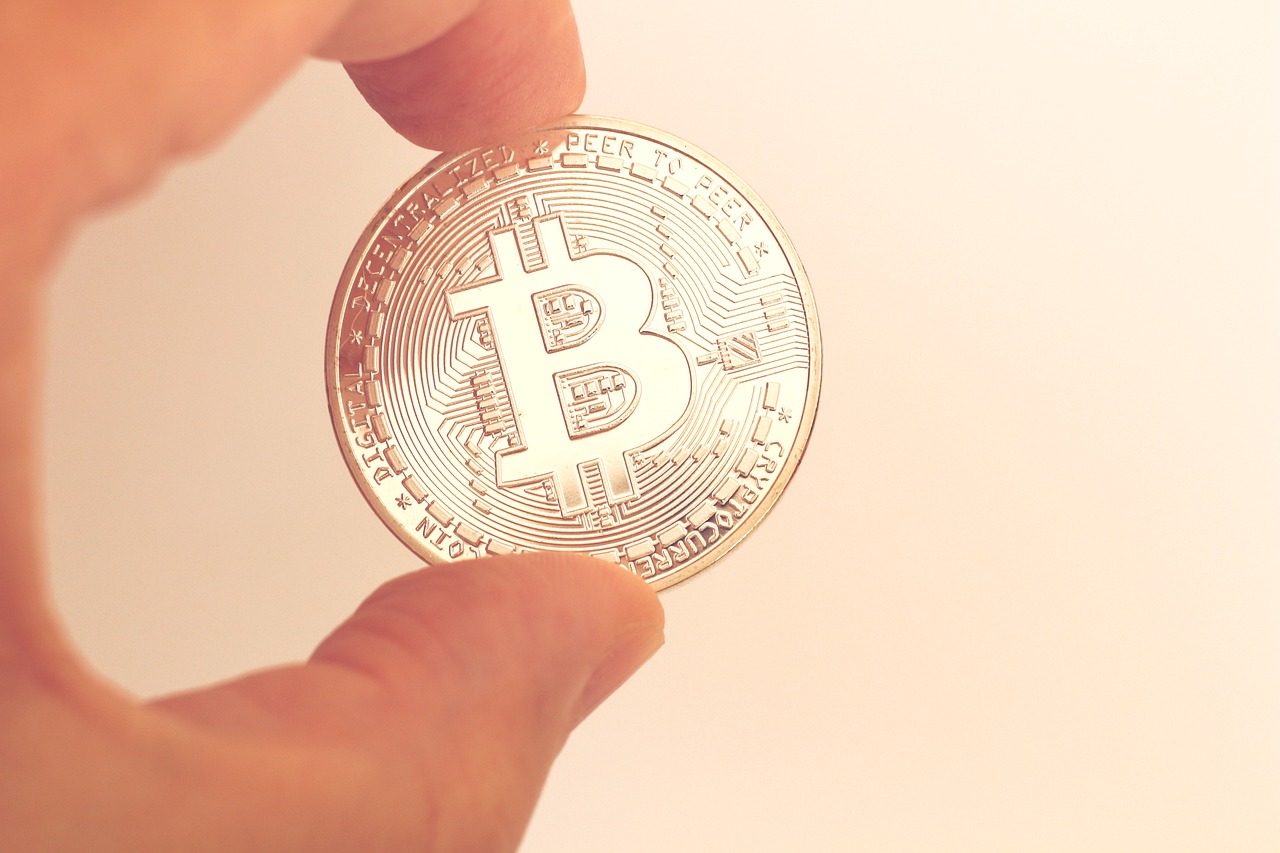
Security and Fraud Concerns
This article explores the anticipated developments in the stablecoin market, examining trends, regulatory impacts, technological advancements, and potential challenges that could shape the future landscape of these digital assets.
Analyzing the latest trends in the stablecoin market reveals how they are adapting to changing economic conditions and user demands, influencing their adoption across various sectors and platforms.
The regulatory environment surrounding stablecoins is evolving rapidly. This section discusses current regulations, potential future policies, and their implications for issuers and users in the stablecoin ecosystem.
Different countries are adopting varying approaches to stablecoin regulation. This subsection highlights key differences and similarities in regulations across major markets, affecting global adoption and compliance.
Regulations can either foster or hinder innovation in the stablecoin space. Here, we explore how regulatory frameworks can shape technological advancements and new product offerings within the market.
Navigating compliance requirements poses significant challenges for stablecoin issuers. This section delves into the complexities of meeting regulatory standards while maintaining operational efficiency.
Understanding the factors driving market adoption of stablecoins is crucial. This subsection examines user preferences, technological advancements, and economic conditions that influence the uptake of stablecoins.
Technological advancements are pivotal in shaping the future of stablecoins. This section discusses emerging technologies that enhance security, efficiency, and user experience in stablecoin transactions.
Blockchain technology continues to evolve, impacting stablecoin functionality. This subsection explores how innovations in blockchain can lead to improved transaction speeds, lower costs, and enhanced security.
The integration of stablecoins with decentralized finance (DeFi) platforms is revolutionizing finance. Here, we examine the synergies between stablecoins and DeFi, highlighting opportunities for growth and innovation.
Despite their potential, stablecoins face several challenges that could hinder their growth. This section outlines key obstacles, including market volatility, security concerns, and competition from traditional financial systems.
Stablecoins are designed to minimize volatility, yet external factors can still impact their stability. This subsection discusses the risks associated with market fluctuations and their implications for users.
Security remains a critical issue for stablecoins, and the landscape is fraught with potential vulnerabilities. As stablecoins gain traction, the risk of fraud and cyberattacks escalates, creating a pressing need for robust security measures. Just like a fortress needs strong walls to protect against invaders, stablecoins require advanced security protocols to safeguard user assets.
One of the major concerns revolves around smart contract vulnerabilities. Many stablecoins are built on complex smart contracts that can be exploited if not properly audited. For instance, in 2020, a significant amount of funds was lost due to a vulnerability in a popular stablecoin's smart contract. This incident highlights the importance of rigorous testing and continuous monitoring of these contracts.
Additionally, phishing attacks are rampant in the crypto space. Users often fall victim to scams that trick them into revealing their private keys or login credentials. As stablecoins become more mainstream, the number of phishing attempts is likely to increase, making user education and awareness critical. Here are some common security practices that users should adopt:
- Enable two-factor authentication: This adds an extra layer of security to your accounts.
- Use hardware wallets: Storing stablecoins in hardware wallets can protect them from online threats.
- Stay informed: Regularly update yourself on the latest security threats and scams in the crypto space.
Moreover, the decentralized nature of stablecoins can pose challenges in terms of accountability. Unlike traditional banks, which have regulatory oversight, stablecoin issuers may operate in a gray area, complicating the resolution of disputes or fraud cases. Users might find themselves in a precarious position if their funds are compromised, lacking clear recourse.
In summary, while stablecoins offer a promising alternative to traditional currencies, they come with their own set of security challenges. Continuous innovation in security technologies, combined with user education, will be essential in addressing these concerns and building trust in the stablecoin ecosystem.
The future of stablecoins is promising, with potential for significant growth and integration into mainstream finance. This section provides insights into predictions and expectations for the coming years in the stablecoin market.
- What is a stablecoin? Stablecoins are digital currencies designed to maintain a stable value by pegging them to a reserve of assets, such as fiat currencies or commodities.
- How do stablecoins work? They typically use mechanisms like collateralization or algorithmic adjustments to ensure their value remains stable.
- What are the risks associated with stablecoins? Risks include market volatility, regulatory challenges, and security vulnerabilities.
- Are stablecoins regulated? The regulatory landscape for stablecoins is evolving, with different countries adopting various approaches to oversight.

Future Outlook
The future of stablecoins is not just bright; it’s positively dazzling with potential. As we look ahead, we can expect a landscape that is increasingly intertwined with mainstream finance, creating an ecosystem where digital assets and traditional currencies coexist harmoniously. This evolution is driven by several key factors that promise to reshape how we perceive and use stablecoins.
Firstly, the integration of stablecoins into everyday transactions is likely to become more prevalent. Imagine walking into your local coffee shop and paying for your latte with a stablecoin. It's not just a futuristic dream; it's becoming a reality as merchants begin to recognize the benefits of accepting digital currencies. This convenience will encourage more users to adopt stablecoins, leading to wider acceptance across various sectors.
Moreover, advancements in technology will continue to enhance the functionality of stablecoins. With blockchain technology evolving at a breakneck pace, we can expect improvements in transaction speeds, security, and cost efficiency. For instance, the implementation of layer-2 solutions could drastically reduce transaction times, making stablecoin transfers almost instantaneous. This would not only improve user experience but also attract more businesses to adopt stablecoin payments.
Another exciting aspect of the future is the potential for stablecoins to play a pivotal role in the decentralized finance (DeFi) space. As DeFi platforms continue to grow, stablecoins will serve as a bridge between traditional finance and the new decentralized models. They provide the stability needed for users to engage in lending, borrowing, and trading without the fear of market volatility. This symbiotic relationship will likely spur innovation, leading to new financial products and services that we can only begin to imagine.
However, it’s essential to acknowledge the challenges that lie ahead. Regulatory scrutiny will increase as governments and financial institutions seek to establish guidelines that protect consumers while fostering innovation. The balance between regulation and freedom will be a tightrope that stablecoin issuers must navigate carefully. Companies that can adapt quickly to regulatory changes will likely emerge as leaders in the space.
In summary, the future outlook for stablecoins is filled with promise. With advancements in technology, increased adoption in everyday transactions, and a growing role in DeFi, stablecoins are poised to become a cornerstone of the digital economy. As we move forward, it will be fascinating to witness how these digital assets evolve and integrate into our financial systems.
- What are stablecoins? Stablecoins are digital currencies designed to maintain a stable value by pegging them to a reserve of assets, such as fiat currencies or commodities.
- How do stablecoins differ from cryptocurrencies? Unlike cryptocurrencies like Bitcoin, which can be highly volatile, stablecoins aim to provide price stability, making them more suitable for everyday transactions.
- What role do stablecoins play in DeFi? Stablecoins serve as a stable medium of exchange in decentralized finance, allowing users to lend, borrow, and trade without the volatility associated with traditional cryptocurrencies.
- Are stablecoins regulated? Yes, the regulatory landscape for stablecoins is evolving, with various countries implementing different regulations to ensure consumer protection and financial stability.
- What challenges do stablecoins face? Stablecoins face challenges such as regulatory hurdles, security concerns, and competition from traditional financial systems, which could impact their growth.
Frequently Asked Questions
-
What are stablecoins?
Stablecoins are a type of cryptocurrency designed to maintain a stable value by pegging them to a reserve of assets, like fiat currencies or commodities. They aim to combine the benefits of digital currencies, such as fast transactions and low fees, with the stability of traditional money.
-
How do stablecoins work?
Stablecoins work by using various mechanisms to keep their value stable. Some are backed by real-world assets, like the US dollar, while others use algorithms to control supply and demand. This ensures that the price remains relatively constant, making them a popular choice for users looking to avoid the volatility typical of other cryptocurrencies.
-
What are the benefits of using stablecoins?
Stablecoins offer several advantages, including reduced price volatility, faster transaction times, and lower fees compared to traditional banking systems. They also provide a bridge between cryptocurrencies and fiat currencies, making it easier for users to engage in digital finance.
-
Are stablecoins regulated?
The regulatory landscape for stablecoins is evolving, with different countries implementing various rules and guidelines. Some jurisdictions have established clear regulations, while others are still developing their frameworks. It's important for users and issuers to stay informed about the regulations that apply to them.
-
What challenges do stablecoins face?
Stablecoins face several challenges, including market volatility risks, security concerns, and competition from traditional financial systems. Regulatory compliance can also pose hurdles for issuers, as they must navigate a complex landscape to ensure they meet legal requirements while maintaining operational efficiency.
-
How do stablecoins integrate with decentralized finance (DeFi)?
Stablecoins play a crucial role in the DeFi ecosystem by providing a stable medium of exchange for various financial services. They enable users to participate in lending, borrowing, and trading without the volatility associated with other cryptocurrencies, fostering a more stable environment for decentralized finance.
-
What is the future outlook for stablecoins?
The future of stablecoins looks promising, with expectations for significant growth and increased integration into mainstream finance. As technology advances and regulatory clarity improves, stablecoins are likely to become more widely adopted, providing new opportunities for innovation in the financial sector.







